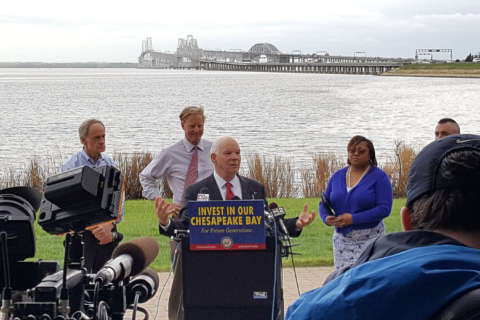BALTIMORE — As spring heads into summer, boaters think about getting out on the Chesapeake Bay, anglers test their lines and take stock of their tackle boxes, and beachgoers count the days until they can dip their toes in the bay’s waters.
The University of Maryland Center for Environmental Science has just assessed the health of the bay, and the report card grade is a “C.” That’s actually good, because the trend shows an upward trajectory. (Failing grades had been assessed in the past.)
Experts said there are things people can do to help the bay continue its recovery from decades of pollution and climate challenges.
Number one: Don’t litter, said Maryland Environment Secretary Ben Grumbles.
“Littering has no place in the bay; it is a continuing problem,” he said.
Making an effort whenever possible to reuse and recycle can also make a difference, Grumbles said.
Drilling down into the data from the state’s smallest creeks can help, too, said Dr. Bill Dennison, vice president for science application at the center.
Dennison encourages people to become “citizen scientists” in the Chesapeake Monitoring Cooperative, a program connected to the Alliance for the Chesapeake Bay.
“You can get down to the stream level — to your backyard creek — and that citizen science initiative can get more eyes on the bay and the watershed,” he said.
That’s important, he said, because the data from streams and rivers that feed into the bay can tell the experts what’s flowing into the bay, what the source is and how to deal with it.
For additional information, visit the Alliance website.






